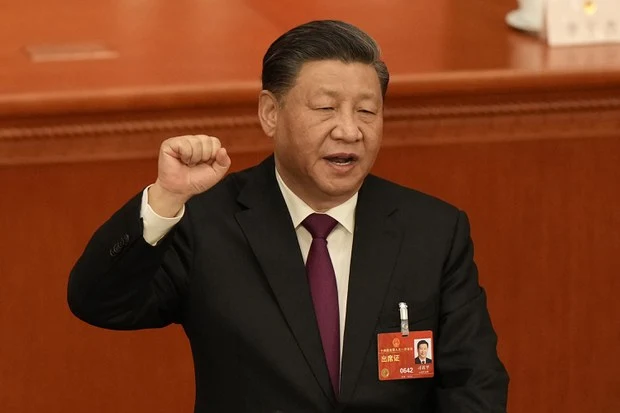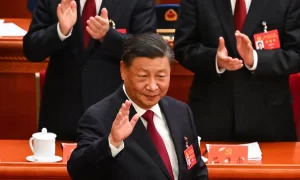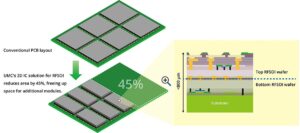Introduction:
In the race for semiconductor chip manufacturing, China has embarked on a groundbreaking venture to revolutionize lithography technology by exploring novel avenues that could potentially disrupt the industry especially ASML.
China is strategizing the establishment of an immense chip manufacturing facility propelled by a particle accelerator to challenge ASML. This technology could be a game-changer that outstrips US sanctions and make China a key player in the chip world. They’re actively pushing forward with the construction of a crucial particle accelerator to bring this cutting-edge technology to life.
This initiative is focused on leveraging particle accelerators to create a cutting-edge laser source for lithography machines, a crucial component in microchip production. Unlike traditional approaches, the Chinese project aims to localize manufacturing and bolster high-volume, low-cost chip production by constructing a colossal factory housing multiple lithography machines around a single accelerator.
This innovation could position China as a global leader in the industrial production of advanced chips, including coveted 2nm chips.
Follow us on Linkedin for everything around Semiconductors & AI
The SSMB Theory and its Potential:
At the core of this technological breakthrough is the innovative Steady-State Microbunching (SSMB) theory, proposed by Professor Zhao Wu at Stanford University and his student Daniel Ratner in 2010. SSMB theory utilizes the energy released by charged particles during acceleration to act as a light source, resulting in a narrow bandwidth, small scattering angle, and continuous pure Extreme Ultraviolet (EUV) light.
ASML prioritizes downsizing chip manufacturing machines for international trade. In contrast, the Chinese initiative centers on domestic production. It aims to construct an extensive facility consolidating numerous lithography machines around a central accelerator. This advancement can fuel abundant and cost-effective chip production. It positions China as a leader in industrializing advanced chips, including 2nm and beyond.
Read More: How ASML’s EUV Lithography Technology Made It Europe’s Most Valuable Company
How SSMB-EUV Light Source Works:
The SSMB technology generates a higher output power of 1000W, significantly surpassing the capabilities of existing EUV technologies. Due to its narrow bandwidth, fewer reflecting mirrors are needed in the setup, enabling higher terminal power. The SSMB-EUV light source is designed at Tsinghua University. It achieves an EUV power exceeding 1kW, marking a significant milestone in the project’s progress.
The Path Forward and Implications:
While numerous researchers are pursuing this technology, Chinese scientists have taken a distinct approach. This project has been in progress since 2017, but it gained significant visibility recently due to Huawei’s notable advancements in chip manufacturing.
“One of the potential applications of our research is as a light source for future EUV lithography machines. I think this is why the international community is paying close attention,”
~ Professor Tang Chuanxiang from Tsinghua University in a report on the university’s website.
While this innovation is still in its experimental verification phase, it holds tremendous promise for the semiconductor industry. Potential success of SSMB-EUV light sources opens doors to new chip manufacturing approaches. It allows China to reduce dependency on sanctioned technologies. It enables the development of a usable lithography system. Additionally, the SSMB-EUV light sources could serve as a foundation for future scientific research in various disciplines beyond microchip production.
“The main challenge lies in guiding the distribution of electrons within the storage ring of the accelerator, causing them to achieve collective synchronous radiation. The device could produce high-quality radiations from terahertz waves at a wavelength of 0.3mm to EUV waves at wavelengths of 13.5nm,”
Professor Zhao Wu at Stanford University
China tech Better than ASML EUV
Compared to the existing ASML EUV technology, SSMB, china tech proves to be a superior light source. It offers higher average power and increased chip production while maintaining lower unit costs.
ASML utilizes laser-induced plasma to generate an EUV source, involving the projection of strong laser pulses onto tin microdroplets. This impact crushes the droplets, producing EUV pulse light. Following intricate filtering and focusing processes, an EUV light source with an approximate power of 250W is generated.
However, the EUV beam, before reaching the chip, goes through reflection from 11 mirrors, resulting in around a 30 percent energy loss at each reflection. Consequently, when the beam reaches the wafer, its power is reduced to less than 5W, presenting challenges especially as manufacturing scales down to 3nm or 2nm.
In contrast, SSMB technology alleviates these concerns. SSMB beams attain a notably higher output power of 1000W, and due to their narrow bandwidth, they require fewer reflecting mirrors, leading to an inherent increase in terminal power.
Project Progress
Zhao initially proposed this theory in 2010, and subsequently, in 2017, Tang assembled a dedicated team at Tsinghua University to pursue this endeavor.
The team initiated the first verification phase at the Metrological Light Source (MLS) in Berlin, Germany. By 2019, the experiment had succeeded, leading to the publication of a paper elucidating the phenomenon in the peer-reviewed journal Nature in 2021.
In 2022, the team at Tsinghua University devised another prototype.
During an academic workshop in January 2022, Professor Pan Zhilong, a member of the team, announced the design of an SSMB-EUV light source at THU, boasting an EUV power higher than 1kW, with several key technologies nearing completion.
In February of the same year, the Hebei Provincial Science and Technology Department organized a special meeting in Xiongan to discuss strategies for fostering technology companies in the new district. Pan attended the meeting, highlighting the team’s dedication to advancing SSMB towards practical industry applications. They also visited Xiongan to identify a suitable site for future construction.
While the establishment of a chip factory necessitates funding and engineering specifics, the importance of innovative ideas to pave new technical paths cannot be overstated. Tang emphasized the need for continued efforts from both the team and the industry to propel the growth of SSMB, although no detailed project progress has been publicly disclosed.
“As a completely new light source, the experimental verification of the technology has been implemented. But it is necessary to build a solid SSMB light source research device operating in the EUV band,”
~Tang, Nature paper.
Conclusion:
China’s ambitious project aims to create a new light source for lithography machines. It utilizes particle accelerators and SSMB theory. This endeavor could reshape the semiconductor industry significantly. China seeks to localize chip manufacturing and diminish reliance on foreign technologies. The focus is on becoming a leader in semiconductor fabrication, particularly in advanced chips like the 2nm chips. The success of the SSMB-EUV light source could revolutionize chip production. It has the potential to unlock new horizons for scientific research and technological innovation. The future of chip manufacturing may very well be illuminated by this groundbreaking Chinese initiative.
Reference: China plans to build a giant chip factory driven by particle accelerator, South China Morning Post.




